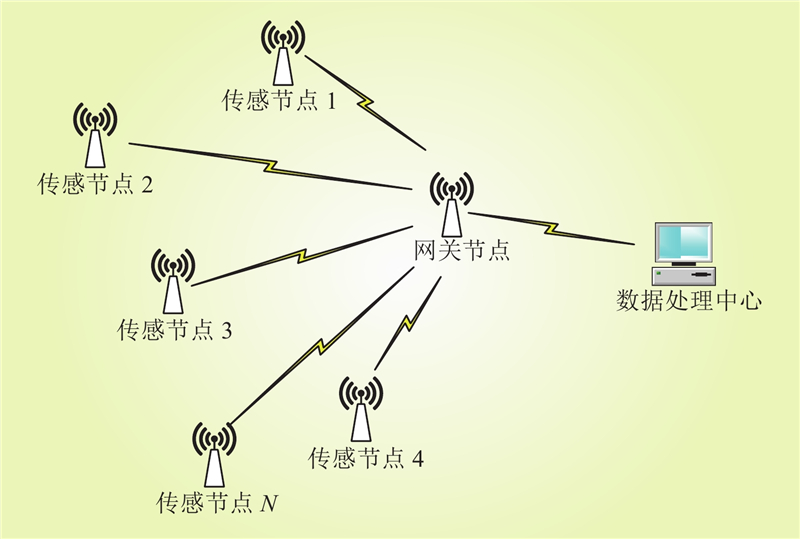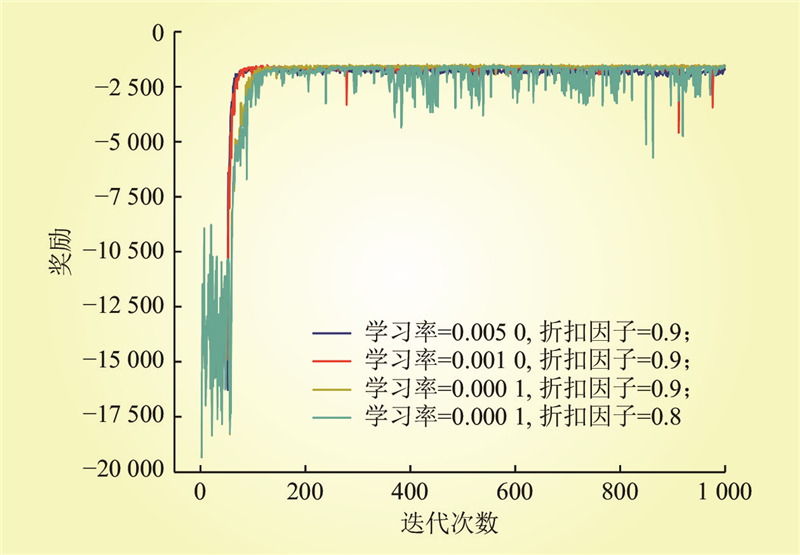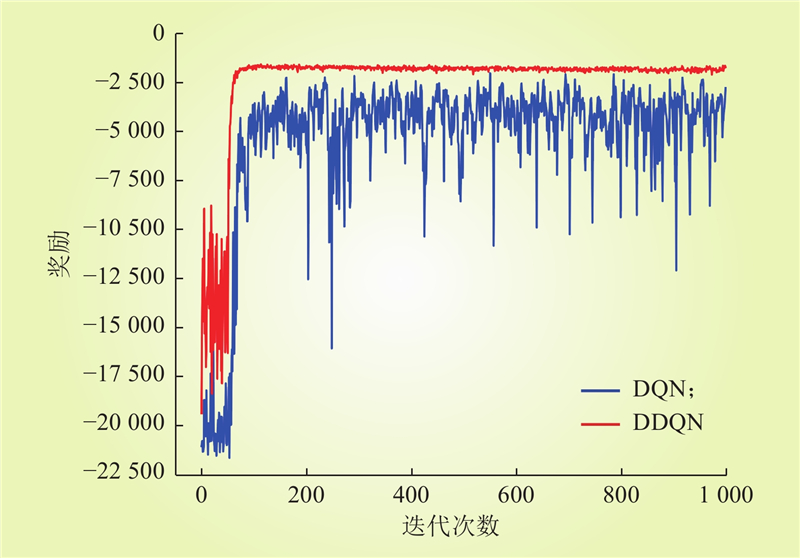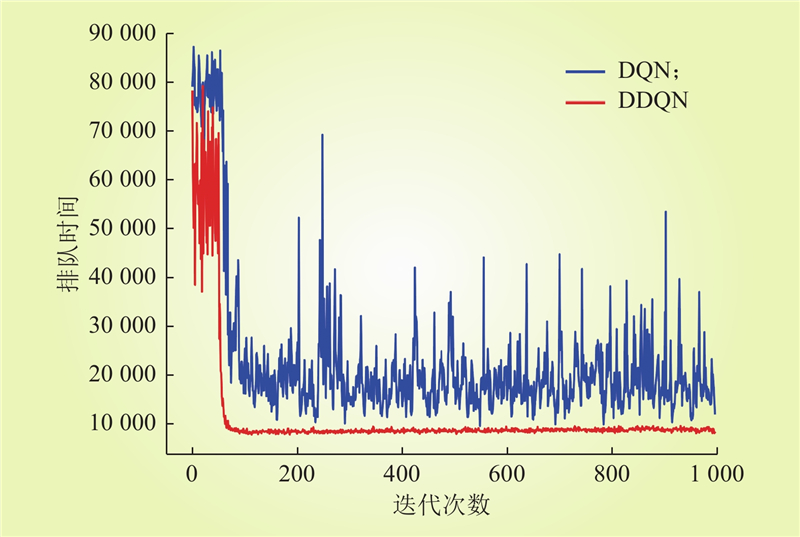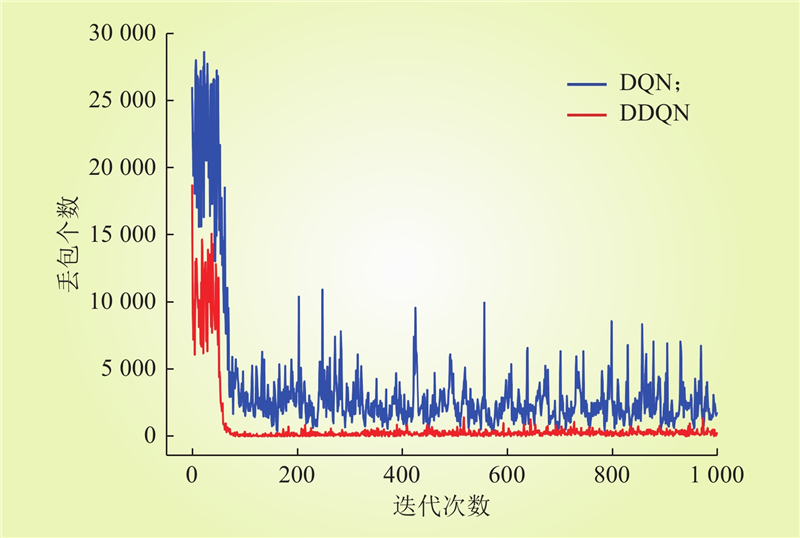| 1 |
PENG F N, LV L, CHEN W R, et al. A multi-objective evolutionary algorithm for wireless sensor networks node deployment[C]//2022 IEEE 8th International Conference on Computer and Communications (ICCC). Chengdu, China. IEEE, 2023: 983–988.
|
| 2 |
MANUEL E M, PANKAJAKSHAN V, MOHAN M T. Data aggregation in low-power wireless sensor networks with discrete transmission ranges: sensor signal aggregation over graph[J]. IEEE Sensors Journal, 2022, 22 (21): 21135- 21144.
DOI
|
| 3 |
谢伟, 王哲斐, 蔡秋烨, 等. 基于最优系统能效的配电网规划方法[J]. 电力工程技术, 2021, 40 (2): 128- 134.
|
|
XIE Wei, WANG Zhefei, CAI Qiuye, et al. Distribution network planning based on optimal system efficiency[J]. Electric Power Engineering Technology, 2021, 40 (2): 128- 134.
|
| 4 |
林日晖, 陈友立. 基于深度Q学习的含用户侧储能微电网频率-电压数字化智能控制策略[J]. 中国电力, 2022, 55 (12): 43- 50.
DOI
|
|
LIN Rihui, CHEN Youli. Frequency-voltage digital intelligent control strategy of microgrid with UserSide energy storage based on deep Q-learning[J]. Electric Power, 2022, 55 (12): 43- 50.
DOI
|
| 5 |
梅冰笑, 周金辉, 孙翔. 基于知识图谱与细胞自动机模型的配电网信息系统风险分析[J]. 中国电力, 2022, 55 (10): 23- 31, 44.
DOI
|
|
MEI Bingxiao, ZHOU Jinhui, SUN Xiang. Analysis of distribution network information risks based on knowledge graph and cellular automata[J]. Electric Power, 2022, 55 (10): 23- 31, 44.
DOI
|
| 6 |
LAM T D, HUYNH D T. Improved algorithms in directional wirelesssensor networks[C]//2022 IEEE Wireless Communications and Networking Conference (WCNC). Austin, TX, USA. IEEE, 2022: 2352–2357.
|
| 7 |
MAJID M, HABIB S, JAVED A R, et al. Applications of wireless sensor networks and Internet of Things frameworks in the industry revolution 4.0: a systematic literature review[J]. Sensors, 2022, 22 (6): 2087.
DOI
|
| 8 |
LILHORE U K, KHALAF O I, SIMAIYA S, et al. A depth-controlled and energy-efficient routing protocol for underwater wireless sensor networks[J]. International Journal of Distributed Sensor Networks, 2022, 18(9): 155013292211171.
|
| 9 |
TEMENE N, SERGIOU C, GEORGIOU C, et al. A survey on mobility in wireless sensor networks[J]. Ad Hoc Networks, 2022, 125, 102726.
DOI
|
| 10 |
YETGIN H, CHEUNG K T K, EL-HAJJAR M, et al. A survey of network lifetime maximization techniques in wireless sensor networks[J]. IEEE Communications Surveys & Tutorials, 2017, 19 (2): 828- 854.
|
| 11 |
杜欣. 无线传感网在电力系统中关键技术的研究和应用[D]. 北京: 华北电力大学, 2012.
|
|
DU Xin. Research and application of key technology of wireless sensor networks in power system[D]. Beijing: North China Electric Power University, 2012.
|
| 12 |
ESMAEILI H, HAKAMI V, BIDGOLI B M, et al. Application-specific clustering in wireless sensor networks using combined fuzzy firefly algorithm and random forest[J]. Expert Syst Appl, 2022, 210, 118365.
DOI
|
| 13 |
ZHAI D S, WANG C, ZHANG R N, et al. Energy-saving deployment optimization and resource management for UAV-assisted wireless sensor networks with NOMA[J]. IEEE Transactions on Vehicular Technology, 2022, 71 (6): 6609- 6623.
DOI
|
| 14 |
ZHAN C, ZENG Y, ZHANG R. Energy-efficient data collection in UAV enabled wireless sensor network[J]. IEEE Wireless Communications Letters, 2018, 7 (3): 328- 331.
DOI
|
| 15 |
王姣姣. 无线传感器网络分布式资源分配优化算法研究[D]. 秦皇岛: 燕山大学, 2020.
|
|
WANG Jiaojiao. Study on distributed resource allocation optimization algorithm for wireless sensor network[D]. Qinhuangdao: Yanshan University, 2020.
|
| 16 |
王立元. 基于多目标优化的无线传感器网络资源分配算法[D]. 秦皇岛: 燕山大学, 2019.
|
|
WANG Liyuan. Resource allocation algorithm based on multi-objective optimization for wireless sensor network[D]. Qinhuangdao: Yanshan University, 2019.
|
| 17 |
李桐. 基于能量传输的无线传感器网络资源分配策略研究[D]. 绵阳: 西南科技大学, 2019.
|
|
LI Tong. Research on resource allocation strategy of wireless sensor networks based on energy transfer[D]. Mianyang: Southwest University of Science and Technology, 2019.
|
| 18 |
LV P. Research on resource scheduling algorithms in the new 5G network architecture[D]. Beijing: Beijing University of Posts and Telecommunications, 2021.
|
| 19 |
LI K W, ZHANG T, WANG R, et al. Deep reinforcement learning for combinatorial optimization: covering salesman problems[J]. IEEE Transactions on Cybernetics, 2022, 52 (12): 13142- 13155.
DOI
|
| 20 |
ZHU C X, DASTANI M, WANG S H. A survey of multi-agent reinforcement learning with communication[EB/OL]. 2022: arXiv: 2203.08975.https://arxiv.org/abs/2203.08975.pdf.
|
| 21 |
LUO F M, XU T, LAI H, et al. A survey on model-based reinforcement learning[EB/OL]. 2022: arXiv: 2206.09328. https://arxiv.org/abs/2206.09328.pdf.
|
| 22 |
WU D, LEI Y, HE M E, et al. Deep reinforcement learning-based path control and optimization for unmanned ships[J]. Wireless Communications and Mobile Computing, 2022, 2022, 1- 8.
|
| 23 |
GANESH A H, XU B. A review of reinforcement learning based energy management systems for electrified powertrains: progress, challenge, and potential solution[J]. Renewable and Sustainable Energy Reviews, 2022, 154, 111833.
DOI
|
| 24 |
ZHAO N, YE Z Y, PEI Y Y, et al. Multi-agent deep reinforcement learning for task offloading in UAV-assisted mobile edge computing[J]. IEEE Transactions on Wireless Communications, 2022, 21 (9): 6949- 6960.
DOI
|
| 25 |
ZHENG J J, LI K, MHAISEN N, et al. Federated learning for online resource allocation in mobile edge computing: a deep reinforcement learning approach[C]//2023 IEEE Wireless Communications and Networking Conference (WCNC). Glasgow, United Kingdom. IEEE, 2023: 1–6.
|



